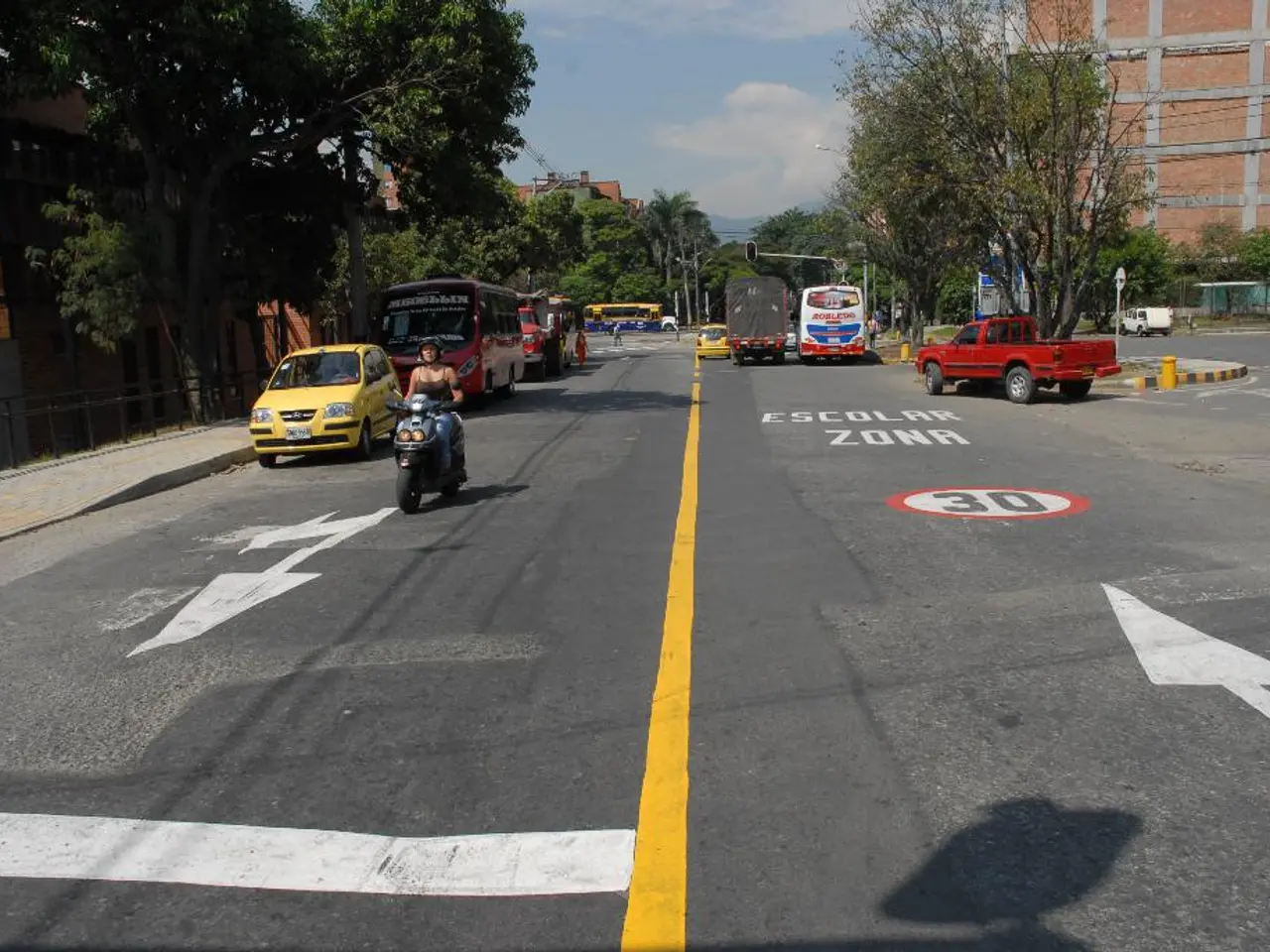Updated road signage catering to advancements in technology and transportation trends
In a significant move towards modernising and enhancing road safety, the General Directorate of Traffic has launched new traffic signs for both drivers and pedestrians. The reform, which entered into force on July 1, 2025, is part of an effort to adapt to technological innovations, creative designs, advancement of infrastructures, and a more egalitarian society.
The objective of the reform is to ensure that the road signaling system transmits clear, direct, and universally understandable messages. To achieve this, the new traffic signs are designed to be more visually appealing and modern compared to previous designs. They are also more inclusive, with gender connotations eliminated from the symbolism to foster inclusivity.
One of the key changes in the new traffic signs is the integration of modern vehicle technologies. New signage now incorporates symbols and indicators relevant to electric vehicles and autonomous vehicles. This reflects a broader effort to make traffic signage more current and relevant in today's technological landscape.
The reform also includes adjustments in sizes for more efficient and sustainable manufacturing. Modernized pictograms for railway and bicycle are part of the update. In addition, the update aims to improve the understanding and visibility of signs for pedestrians and cyclists.
New types of fuel information are incorporated in service stations, while more detailed parking signs are included in the update. The new signs are intended to improve understanding by users and promote coherence throughout the national territory.
The reform seeks to comply with the principles of an effective semiotic system in line with the Vienna Convention on Road Signs. The update also includes new regulations and restrictions relevant to modern transportation scenarios, such as "No motor vehicles except motorcycles," "No vehicles carrying dangerous goods," and detailed vehicle-specific restrictions.
The new traffic signs are already visible in many places but will not be included immediately in the theoretical exams of driving licenses. However, the update to the traffic signs is aimed at facilitating the preparation of driving school candidates.
In Saudi Arabia, stop signs are now bilingual (Arabic-English), which facilitates better understanding among a diverse population of drivers and pedestrians. This kind of update supports inclusivity and clarity. The new traffic signs also better accommodate pedestrians and cyclists with distinct signs marking pedestrian-only paths, cyclist-only lanes, shared pedestrian and cyclist routes, and equestrian paths.
Overall, the key changes in the new traffic signs encompass the integration of modern vehicle technologies, enhanced visual design for clarity and safety, the inclusion of multilingual text for better understanding, and expanded signage for various user groups including pedestrians, cyclists, and specialized vehicles. These updates aim to create a safer, more accessible, and technologically current traffic environment.
The average driver can anticipate encountering new traffic signs that are more visually appealing and modern, designed to be more inclusive, and incorporating symbols relevant to electric and autonomous vehicles in the finance and transportation industry. The changes, including multilingual text and expanded signage for various user groups, aim to promote a safer, more accessible, and technologically current transportation landscape.




